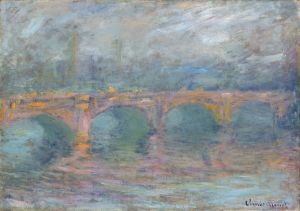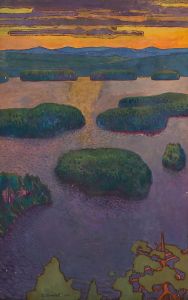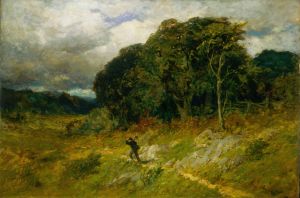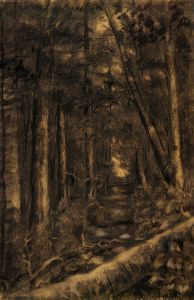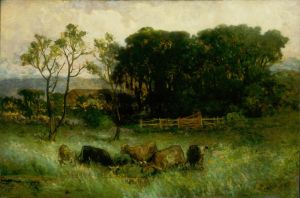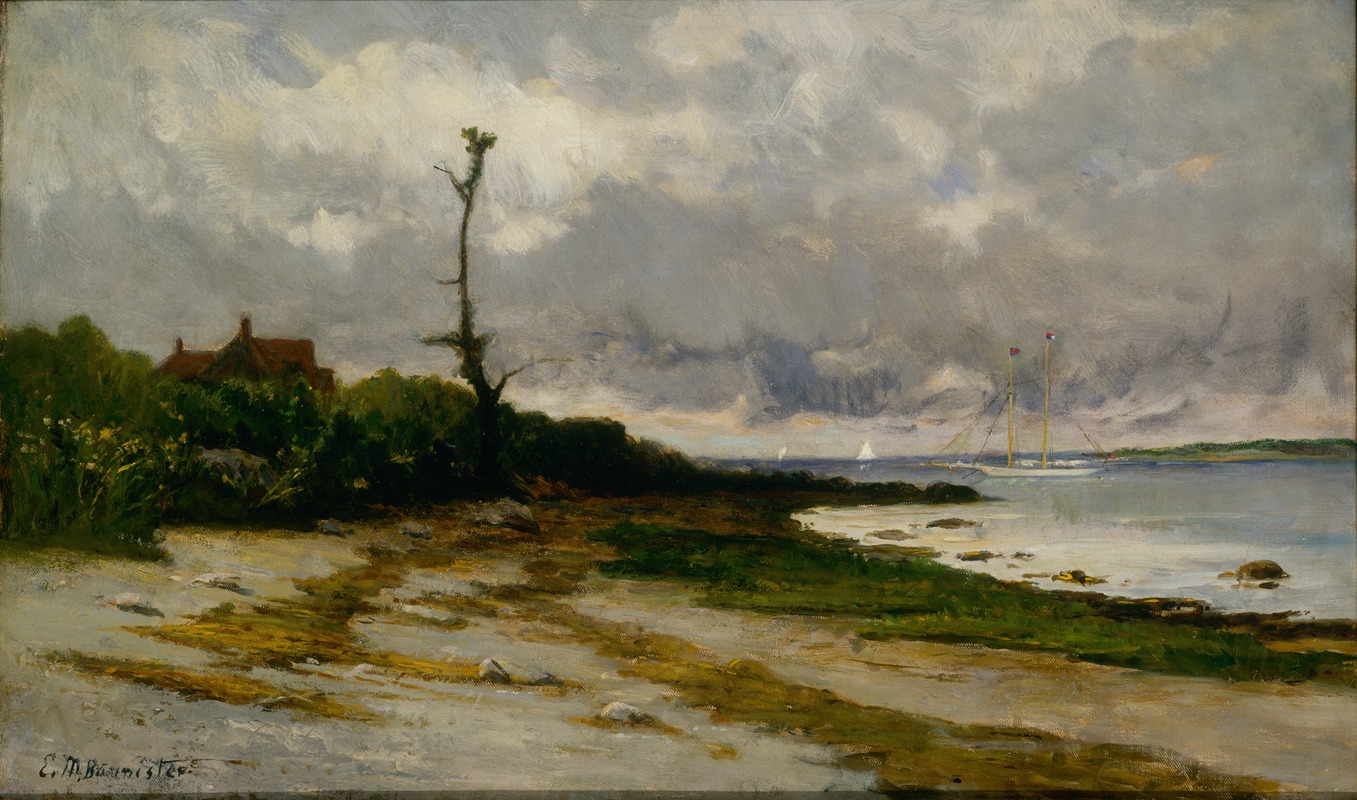
Landscape near Newport,R. I.
A hand-painted replica of Edward Mitchell Bannister’s masterpiece Landscape near Newport,R. I., meticulously crafted by professional artists to capture the true essence of the original. Each piece is created with museum-quality canvas and rare mineral pigments, carefully painted by experienced artists with delicate brushstrokes and rich, layered colors to perfectly recreate the texture of the original artwork. Unlike machine-printed reproductions, this hand-painted version brings the painting to life, infused with the artist’s emotions and skill in every stroke. Whether for personal collection or home decoration, it instantly elevates the artistic atmosphere of any space.
"Landscape near Newport, R. I." is a painting by Edward Mitchell Bannister, an African American artist known for his contributions to the American art scene in the 19th century. Bannister was born in 1828 in St. Andrews, New Brunswick, Canada, and later moved to the United States, where he became an influential figure in the art community, particularly in New England.
Bannister's work is often associated with the Barbizon school, a movement that emphasized naturalism and the depiction of rural scenes. His style is characterized by a focus on atmospheric effects and a delicate handling of light and shadow, which are evident in "Landscape near Newport, R. I." This painting exemplifies Bannister's ability to capture the serene beauty of the American landscape, a theme that resonated with the broader Hudson River School movement, although Bannister's approach was more intimate and less grandiose.
"Landscape near Newport, R. I." depicts a tranquil scene near Newport, Rhode Island, an area known for its picturesque coastal views and rolling landscapes. Bannister's choice of subject reflects his interest in the natural world and his desire to convey its inherent beauty and tranquility. The painting likely features elements typical of Bannister's landscapes, such as lush greenery, expansive skies, and a sense of peaceful solitude.
Bannister's career was marked by significant achievements, especially considering the racial barriers he faced during his lifetime. In 1876, he won a bronze medal at the Philadelphia Centennial Exposition for his painting "Under the Oaks," a recognition that helped to establish his reputation as a serious artist. Despite the racial prejudices of the time, Bannister was able to gain respect and admiration within the art community, particularly in Providence, Rhode Island, where he was an active member of the local art scene.
The significance of "Landscape near Newport, R. I." extends beyond its aesthetic qualities. It represents Bannister's perseverance and dedication to his craft in the face of adversity. His work is a testament to the contributions of African American artists to the cultural and artistic heritage of the United States. Bannister's paintings, including this one, continue to be celebrated for their technical skill and emotional depth.
Today, Bannister's works are held in various collections, and he is remembered as a pioneering figure who paved the way for future generations of African American artists. His legacy is honored through exhibitions and scholarly research that highlight his role in American art history. "Landscape near Newport, R. I." remains an important piece within Bannister's oeuvre, reflecting both his artistic vision and the broader cultural context of his time.







